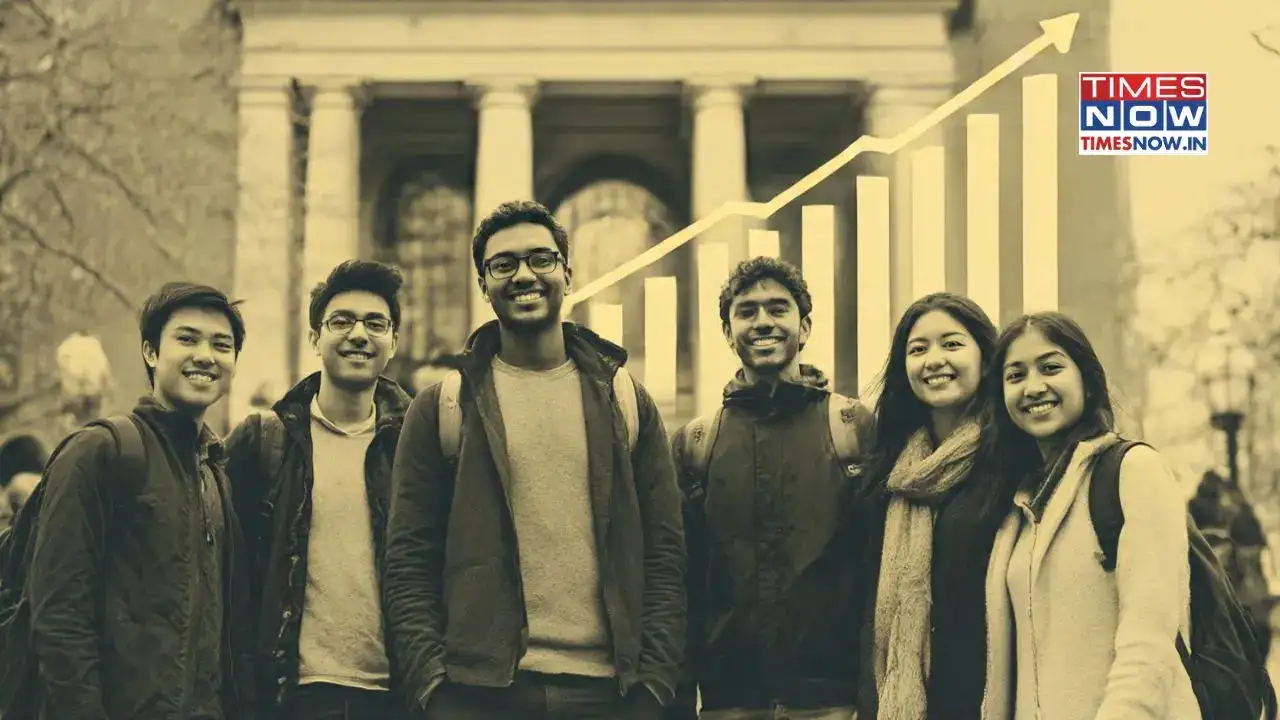Copyright timesnownews

In a first since the past few years, US' famous Harvard College has set a record with the highest number of international students' enrolment since the Faculty of Arts and Sciences (FAS) reinstated standardised test scores as a required part of the application process. The Ivy League school on Thursday released data and demographics for the Class of 2029. This is the first class of undergraduates admitted since FAS reinstated the standardised test scores in the application process. For this class, Harvard offered admission to 2,003 applicants, with 1,675 accepting, for a yield rate of 83.6 per cent. This is Harvard's fifth consecutive admissions cycle with a yield above 83 per cent. Increased Diversity: What the data shows According to the data shared by the College, Harvard received 47,893 applications, a 10 per cent increase from the most recent admissions cycle (Class of 2023) for which it required applicants to submit standardised test scores. This class is made up of students from 92 countries and all 50 states. Interestingly, international students make up 15 per cent of the class. The yield rate for international students was 90.3 per cent, with only eight choosing to defer their admission. Of students in the class who self-identified their race, 11.5 per cent identified as African American or Black, 41 per cent identified as Asian American, 11 per cent identified as Hispanic or Latino, and nearly 2 per cent identified as Native American, Native Hawaiian, or Pacific Islander. Eight per cent of the class did not disclose race or ethnicity. Applicants who self-selected more than one race are reflected in the per centages for each of their respective identified races. Racial demographics are accessible only after the admissions process is complete. First-generation students represent 20 per cent of the class. Twenty-one per cent are estimated to be eligible for federal Pell Grants. In this first admitted class since the FAS announced a significant undergraduate financial aid expansion in March 2025, 45 per cent are attending the College tuition-free. More than half of those students qualified for a free Harvard education with financial aid covering all expenses, including tuition, fees, food, and housing. The class includes 16 veterans. Twelve transfer students joined the class, and 75 students were admitted from the wait-list. Among US students, geographical representation is as follows: New England, 17.8 per cent; Middle Atlantic, 20.6 per cent; Southern US, 15.9 per cent. The Midwest is represented by 10 per cent of the class; the Central region, 1.6 per cent; the Mountain region, 3.2 per cent; and the Pacific region, 13.6 per cent. “The Class of 2029 was drawn from big cities and small towns, suburbs and farms, and from nations around the world, and all students, no matter where they’re from, where they went to high school, or what their personal circumstances might be, were admitted to Harvard because they share the extraordinary potential to change the world,” said William Fitzsimmons, dean of admissions and financial aid. “Amid several seismic shifts in higher education admissions over the past few years, as well as the effects of COVID, the Class of 2029 enters Harvard as worthy successors to the generations of students who’ve come before them.” Why is this figure important The figure of international students become more important this year due to the recent battle that the top college has had to fight with the Trump administration. Since Donald Trump took over the White House as the President of the United States of America (USA), Trump and his allies criticised Harvard University over alleged discrimination and elite bias, especially in admissions policies. After continuous back-and-forth, the Trump administration launched several changes in immigration policies that could hurt international students, and Harvard ensured support to all incoming and prospective students. “The Class of 2029 reflects everything that makes Harvard College extraordinary,” said Edgerley Family Dean of the Faculty of Arts and Sciences Hopi Hoekstra. “These remarkable students come to us from across the country and around the globe with boundless curiosity and eagerness to join a community that challenges them to learn deeply, listen generously, and expand their understanding of themselves and the world around them. Even amid shifting economic realities, our commitment to access and opportunity remains unwavering. That nearly half of this class will attend Harvard tuition-free fills me with immense pride and optimism for the future they will help shape.” Meanwhile, Donald Trump-led US administration sent letters or a “compact” proposal to nine major US universities asking them to commit to a set of policy demands in exchange for favourable access to federal funding. The nine universities that received the letter are Massachusetts Institute of Technology (MIT), Brown University, Dartmouth College, University of Pennsylvania (Penn), University of Southern California (USC), University of Texas (Austin), University of Arizona, University of Virginia (UVA), and Vanderbilt University. The demands included capping international undergraduate enrollment at 15 per cent and capping students from any single country at 5 per cent. The universities were offered “preferential access” to federal funding and grants if they signed on.



